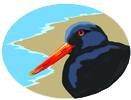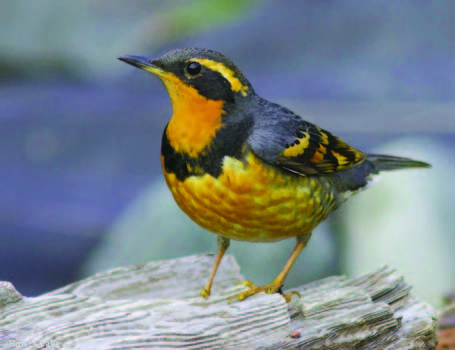The other day, I heard my first Varied Thrush of the season. They come down from the north to winter. Their call is associated with shaded, damp, coniferous forest of the Pacific north-west. This unique call is an eerie, quavering single note that fades. A few seconds later, there is another single note on a different pitch. I remember one camper thinking it must be somebody’s alarm clock.
Although it is most closely related to the large group of Asian thrushes, the Varied Thrush looks like its cousin the American Robin, but with an orange eyebrow, two orange wing bars and a black band across its orange chest. The female looks similar to the male but muted.
They are seen foraging on the ground. They feed on sow bugs, snails, worms, crickets, ants, bees, acorns and berries from blackberries to madrone and poison oak. Varied Thrushes are noted for their aggressive behavior at feeding sites even in winter, which is unusual. They do this by lowering their heads, lifting their tails and spreading their wings. One interesting report was of an unfortunate Varied Thrush, which was found in Berkeley with an acorn impaled on its beak. Weak and unable to fly, it was captured, freed of the acorn and released.
Varied Thrush male. Photo Ron LeValley www.LeValleyphoto.com


